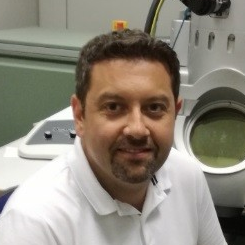Supported Metal Catalysts and Their Applications in Fine Chemicals
A special issue of Catalysts (ISSN 2073-4344). This special issue belongs to the section "Catalytic Materials".
Deadline for manuscript submissions: closed (31 March 2020) | Viewed by 27939
Special Issue Editors
Interests: heterogeneous catalysis; homo- and hetero-metallic nanoparticles; selective organic transformations; electron microscopy; materials characterization
Special Issues, Collections and Topics in MDPI journals
Special Issue Information
Dear Colleagues,
Catalysis is recognized as a key and unavoidable tool in the development of truly new and efficient chemical reactions, as well as their economic and environmental sustainability. Supported metal catalysts are largely used in the manufacture of a wide range of fine and specialty chemicals including pharmaceuticals, flavor and fragrances, herbicides and pesticides, polymer materials, pigments and dyestuffs, and plastic and rubber additives. In this view, significant efforts have been directed toward the rational design and development of supported metal catalysts using advanced synthetic approaches that allow one to fine-tune the morphology and geometry of the support at nanoscale level and the chemical nature and size of the catalytically active site, as well as its local environment. The rapid development of characterization techniques that are able to reveal the structural, morphological, compositional, and textural properties of catalysts at an atomic level, even in in-situ or operando conditions, resulted in a huge contribution to this goal. Mimicking nature’s enzymes, the new generation of supported metal catalysts offer the possibility to carry out reactions with increased turnover rates and selectivity and, in favorable circumstances, with high stability/recyclability thanks to their very low metal leaching and poisoning.
Combined with this ambitious objective is the progress of other enabling technologies, i.e., techniques that facilitate the preparation of the desired product in the most efficient way and with minimal penalty to the environment. These advancements include the use of non-conventional reaction media, solvent-free reactions, continuous-flow approaches, and alternative energy-transfer methods, such as microwave, photochemical, and sonochemical conditions. Further aspects of current strong interest, in connection with supported metal catalysts, focus on the implementation of multi-step or cascade processes and the exploitation of bio-sustainable feedstocks.
The present Special Issue aims to present the recent development in the synthesis, characterization, and use of supported metal catalysts for chemo-, regio-, and stereoselective organic transformations in the fine and specialty chemicals field. Studies focused on the structure–activity/selectivity relationship in supported metal catalysts, including advanced characterization tools (both ex situ and in situ), are welcome. The issue is open to both original research papers and reviews.
Dr. Claudio Evangelisti
Dr. Alessandro Mandoli
Guest Editors
Manuscript Submission Information
Manuscripts should be submitted online at www.mdpi.com by registering and logging in to this website. Once you are registered, click here to go to the submission form. Manuscripts can be submitted until the deadline. All submissions that pass pre-check are peer-reviewed. Accepted papers will be published continuously in the journal (as soon as accepted) and will be listed together on the special issue website. Research articles, review articles as well as short communications are invited. For planned papers, a title and short abstract (about 100 words) can be sent to the Editorial Office for announcement on this website.
Submitted manuscripts should not have been published previously, nor be under consideration for publication elsewhere (except conference proceedings papers). All manuscripts are thoroughly refereed through a single-blind peer-review process. A guide for authors and other relevant information for submission of manuscripts is available on the Instructions for Authors page. Catalysts is an international peer-reviewed open access monthly journal published by MDPI.
Please visit the Instructions for Authors page before submitting a manuscript. The Article Processing Charge (APC) for publication in this open access journal is 2700 CHF (Swiss Francs). Submitted papers should be well formatted and use good English. Authors may use MDPI's English editing service prior to publication or during author revisions.
Keywords
- heterogeneous catalysts
- immobilized metal catalysts
- advanced charaterization studies
- fine and specialty chemicals
- heterometallic catalysts
- flow chemistry






